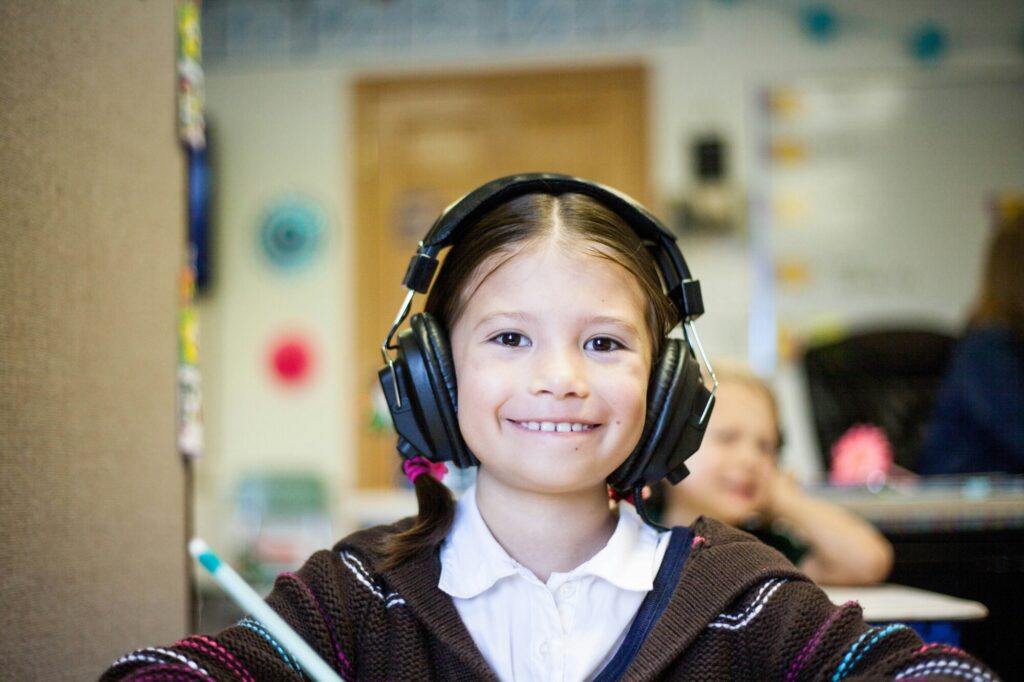Maybe you have heard this phrase before, or maybe it’s new to you. Either way, you likely have questions about the Science of Reading. The good news is, you’re not alone! The science of reading is a hotly contested, yet deeply important topic. Getting this right is essential because not enough students are learning to read when we rely on debunked methods.
We as a society believe that reading is a civil right, and as such, it is critical that we teach reading in a way that empowers all students, not just those who pick it up more easily or have more access to out-of-school resources. Here, we’ll be summarizing some of our own understandings about the Science of Reading, as well as suggesting some ways you can stay engaged on this topic.

Defining the Science of Reading
The Science of Reading refers to the established and growing research we have about how students learn to read. This research brings together findings from a variety of fields that were previously siloed from one another—education, psychology, neuroscience, linguistics, and more—so we can get a full picture of how children learn to read.
According to the Reading League’s Science of Reading Defining Guide, “This research has been conducted over the last five decades across the world, and it is derived from thousands of studies conducted in multiple languages.” It informs the process through which children develop reading and writing skills, why some readers have difficulty mastering literacy skills, and the most effective ways to assess and teach reading.
Because this definition is about the research and not a specific program, it can leave a lot of folks confused. Many educators, parents, and policy makers care most about the final piece: how literacy instruction can be responsive to this research, especially as it continues to grow in breadth and depth.

Applying the science to practice
While it is true that experts and practitioners are learning more all the time, there are certain practices that have been consistently supported by research. We can consider these practices as established in the Science of Reading, such as teaching phonics in a systematic way and making time to read aloud to children. You can find a summary of the National Reading Panel’s foundational report from 2000 on Reading Rocket’s website for information on long-known best practices in reading instruction.
But, there are other practices that do not have this consistent scientific backing, such as teaching students to use pictures to guess at words or having students take turns reading aloud to the whole class (commonly referred to as “round robin”). Many of these findings have been established for decades now, and yet some people may be disinclined to let go of the methods they believe to be tried and true. It takes a combination of policy change and growth mindset to embrace new ways of doing things and overcome the inertia of how things have always been done. Emily Hanford’s journalism has highlighted states like Mississippi where this convergence is getting great results for students—to read more, visit American Public Media’s Reading Reports page.
It also takes a certain level of discernment to evaluate the research critically and not be tossed by each new trendy wave. Collaborative Classroom’s recent blog post explains the difference between a trend that has been consistently debunked (like using special fonts with students who have dyslexia) and an open question that needs more research (like whether to use “pseudowords” in instruction for more phonics practice, like “mib” and “rog”). Furthermore, with 21% of students speaking a language other than English at home, advocates for multilingual learners point out that the current science of reading centers on monolingual students. These advocates emphasize the need for more research into the unique ways that emergent bilinguals learn to read and to teach them accordingly.

Reading is a Civil Right
While the headlines have focused on recent dives in literacy scores due to pandemic-related school closures, the truth is, we have never lived up to the ideals of reading for all—and historically marginalized students, such as Black, Indigenous, and other students of color, as well as students from low socioeconomic status, are the ones who suffer the most from this neglect of duty.
Amplify’s Science of Reading Primer eloquently states, “Achieving this noble goal—effortless reading, and love of reading, for all—is one of the great social undertakings of our time.” While Amplify helpfully highlights the ways that schools have succeeded in this effort, it’s not up to school teachers and administrators on their own—we all have a vital role to play in ensuring that all children are learning to read at school.
The Defining Guide calls on everyone—from curriculum authors to government leaders to pediatricians to parents—to do their part. To learn more about your own state’s policies on the science of reading, check out this EdWeek article. We must do our best with all the knowledge and resources we have to ensure that we teach each child to read.




